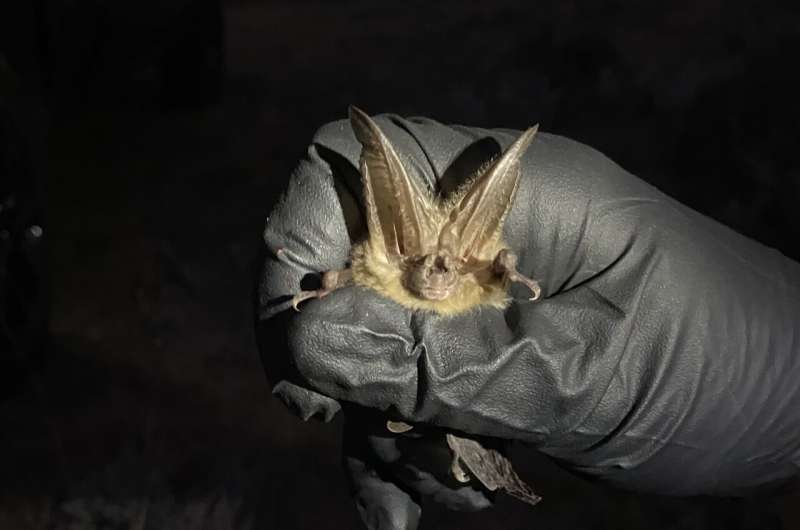Researchers have uncovered the areas in San Diego County that need the most attention to save the local bat populations. With 22 of the 41 known bat species in the United States found in San Diego, preserving these critical pollinators and natural pest control is vital. The study highlights key threats such as artificial lights, urbanization, and lack of conserved land, providing a roadmap for targeted conservation efforts.

Uncovering San Diego’s Bat Conservation Priorities
A team of wildlife managers from the U.S. Geological Survey in San Diego and a colleague from the San Diego Natural History Museum have conducted a comprehensive study on the bat populations in San Diego County. The research, published in the journal PLOS ONE, reveals the areas that require the most attention to safeguard these vital creatures.
San Diego County is home to an impressive 22 of the 41 known bat species in the United States, making it a significant hub for bat biodiversity. However, the study found that 16 of these species are at risk of extinction, highlighting the urgent need for conservation efforts.
Bats play a crucial role in the ecosystem as a major natural source of insect control. A single bat can consume up to 1,000 insects in just one hour, making them vital to maintaining a healthy balance in the environment. Preserving bat populations is not only essential for the San Diego area but also has far-reaching implications for the global ecosystem.
Mapping Bat Habitats and Identifying Threats
The researchers analyzed bat population data from San Diego County, focusing on two key factors: species richness and threats.
The species richness data revealed valuable information about bat diversity, including population size, health, and current conservation efforts surrounding each species. This data helped the team map the areas where different bat species lived and hunted for food.
The researchers then identified the primary threats facing the bat populations in San Diego County. These include artificial lights, urbanization, and non-conserved land (land not in its natural state). The data showed that urbanization and artificial lighting particularly impact bats, as these factors disrupt their natural behaviors.
Urbanization can limit the availability of resources for bats, while artificial lighting can confuse them, as they are nocturnal and rely on light cues to know when to feed and when to return to their shelters. This information has proven crucial in developing targeted conservation strategies.
Additionally, the researchers found that preserving natural habitats and reducing light pollution are essential for maintaining healthy bat populations. The team’s efforts have helped establish a comprehensive plan of action to support the bats in San Diego as the landscape continues to undergo development and change.
Implementing Conservation Strategies for San Diego’s Bats
Armed with the insights from their study, the research team has outlined several key conservation strategies to protect the bat populations in San Diego County.
One of the primary initiatives involves the installation of bat boxes in strategic locations. These specialized structures provide safe and suitable roosting sites for bats, helping to offset the loss of natural habitats due to urbanization. Additionally, the researchers emphasize the importance of planting native vegetation that can support the bats’ foraging needs.
By addressing the threats of artificial lighting and urbanization, the conservation efforts aim to create more bat-friendly environments. This includes working with local authorities to implement dimmer and more directional lighting, as well as promoting the preservation of undeveloped land and natural areas.
The data-driven approach taken by the research team has laid the foundation for a comprehensive plan of action, ensuring that the vital bat populations in San Diego County can thrive for generations to come. As the world continues to grapple with the effects of climate change and habitat loss, the conservation of these important pollinators and natural pest control agents has never been more crucial.
